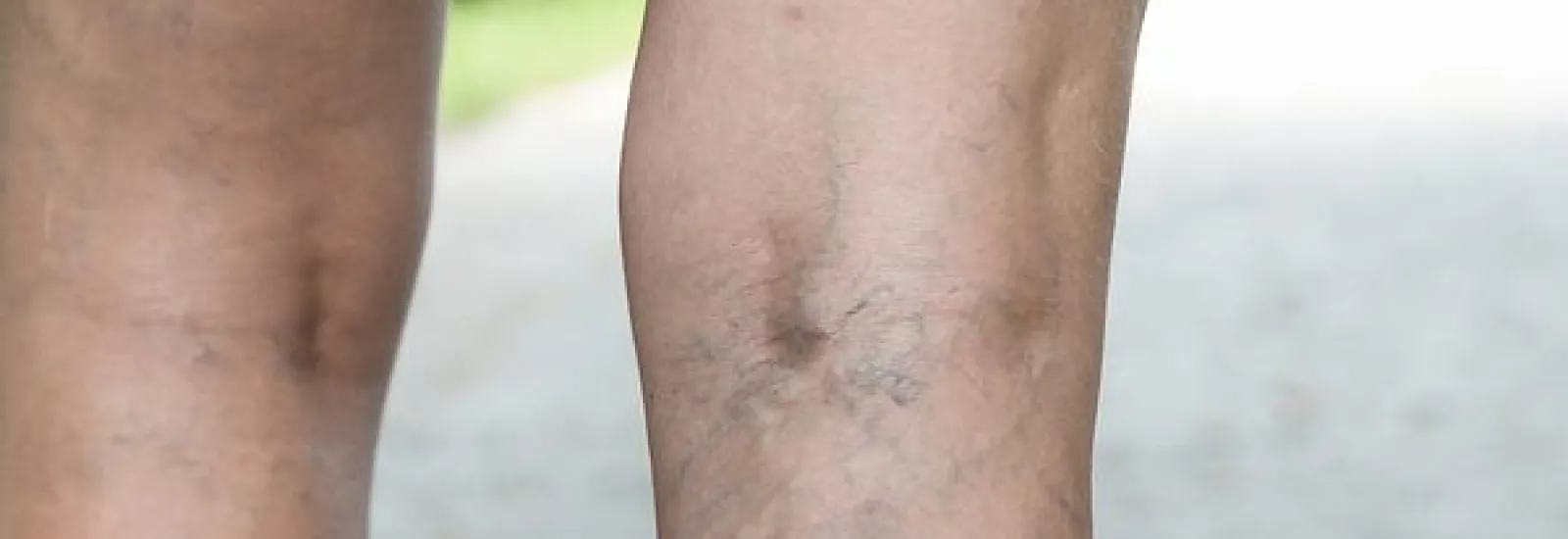
5 Facts about Varicose Veins
Varicose veins are a common condition. According to the Vascular Disease Foundation they affect half of people 50 and older. The condition is more common in women than men.
Many people consider these unsightly veins a cosmetic concern. For some people it's a more complex problem. They may also be a sign of a more serious health problem including circulatory issues.

Symptoms
Varicose veins occur most often on the legs and feet. They are usually dark purple or blue in color and resemble twisted bulging cords that are often elevated on the skin. Many people with these veins experience no pain. Those who do have pain may feel an achy heavy feeling. Some people have a burning sensation. Muscle cramping and swelling in the lower legs are also common.
In some cases the veins require medical attention. This is the case if the veins become hardened change color or skin ulcers appear near the ankle.
Spider veins are similar but are smaller and thinner. They tend to look like spider webs and are often blue or red.
Causes
The job of veins is to return blood from the various areas of your body to your heart so that the blood can recirculate. As you get older your veins may lose elasticity and stretch causing the valves in your veins to become weak. This results in blood that should be moving toward your heart flowing backward and pooling in the veins in your legs.
Pregnancy can also cause vein problems. The blood volume increases during pregnancy which decreases the flow of blood from the legs and pelvis. Vein problems may worsen later in pregnancy as the uterus grows. These veins usually improve within 12 months of delivery.
Risk factors
In addition to age there are several other risk factors that make a person more prone to developing problematic veins. Women and people with a family history are more likely to develop them. If other family members have had varicose veins you have a higher risk of also having them. Obesity also increases your risk as well as occupations and activities that require you to sit or stand for long periods of time.
Prevention
It's not possible to completely prevent varicose veins but there are actions you can take to minimize their appearance. These include doing things that improve circulation and muscle tone in the legs. These actions also help relieve discomfort.
To help reduce your risk of developing varicose or spider veins or getting new ones exercise on a regular basis. Participate in exercise that improves your leg strength which can help improve circulation and vein strength. Good exercises include walking running and bike riding.
Minimize the pressure on your legs by maintaining a healthy weight. Eat a low-salt high-fiber diet that includes plenty of fresh produce. Low salt helps reduce swelling.
Avoid wearing high heels and change your sitting or standing position on a regular basis. Elevating your legs when you're resting is also helpful.
Treatment
Today there are treatment options for removing varicose veins.
Sclerotherapy is a minimally invasive treatment. This procedure involves the use of a very fine needle that is used to inject a sterile sclerosing liquid into the veins. This liquid causes the veins to shrink and disappear. The result is elimination or reduction of spider veins and smaller varicose veins.
Endovenous Thermal Ablation is a procedure that heats the vein until it diminishes in size and can be surgically removed with a phlebectomy procedure.
Reid Health Vein Center also utilizes a non-thermal based treatment of the
saphenous veins using cyanoacrylate glue. This allows the potential treatment of the entire length of the vein
without the risk for nerve injury seen with other methods. This minimally invasive technique combined
with microstab phlebectomy of bulging varicose veins with or without sclerotherapy
of spider veins provides durable relief and an improved cosmetic result while
simultaneously healing venous ulcers and preventing ulceration from developing.
Varicose veins can be a distressing and even painful condition. There are treatment methods that can minimize or even eliminate the discomfort. Attend a free vein screening at Reid Health to hear about your options.

